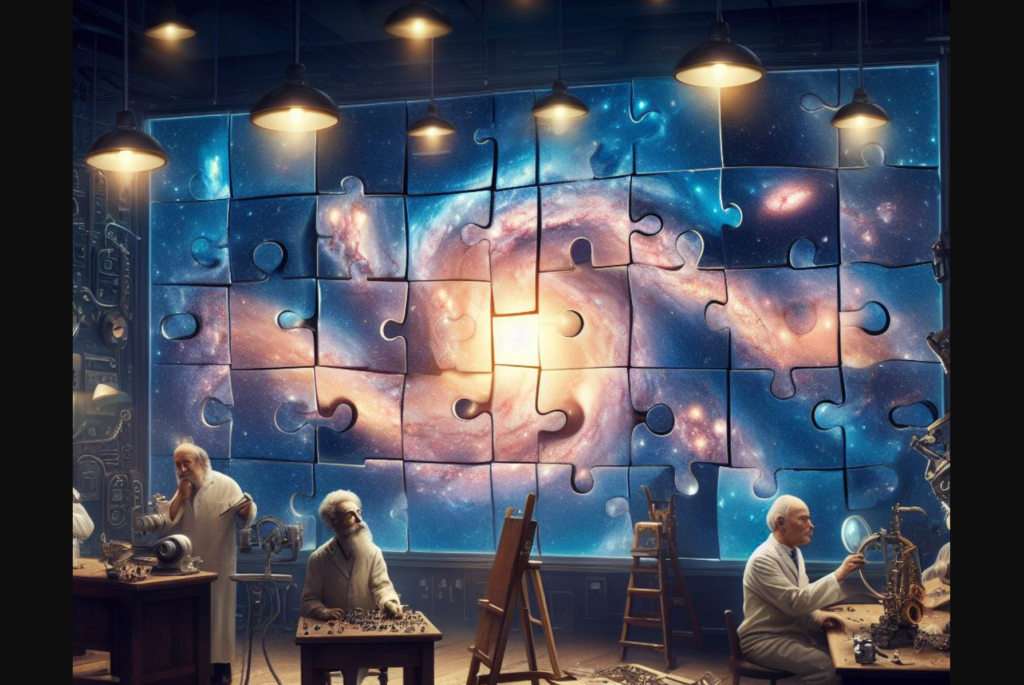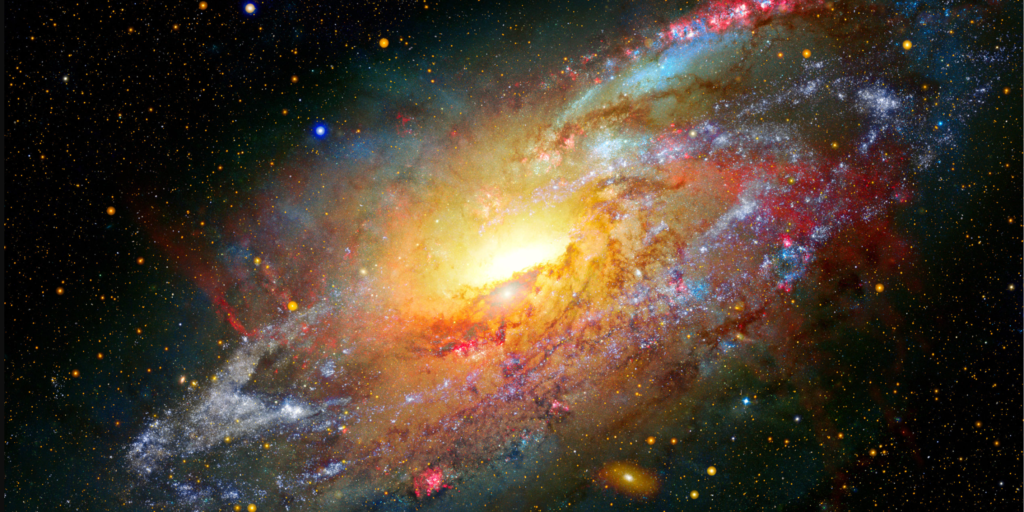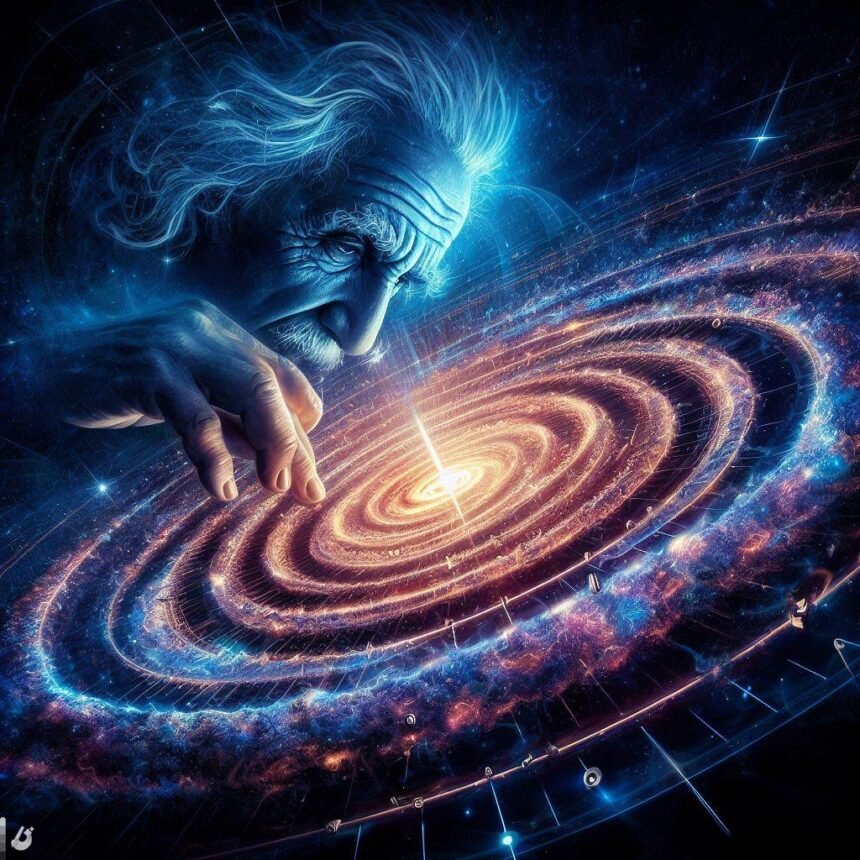Astronomers have long been captivated by the Universe – its vastness, its mysteries, and its ever-changing nature. Among the most intriguing puzzles in modern astrophysics is the accelerating expansion of the universe. This phenomenon challenges our understanding of gravity, dark energy, and the fundamental fabric of spacetime. Let’s delve into this cosmic enigma and explore the scientific quest to decipher its secrets.
The Expanding Universe
In the early 20th century, Albert Einstein revolutionized our understanding of gravity with his theory of general relativity. When he applied this theory to the cosmos, he faced an unexpected revelation: the universe was not static. Instead, it was either expanding or contracting. Einstein introduced a cosmological constant (denoted by the Greek letter lambda, λ) to maintain a stable universe – a move he later called his “greatest blunder.”
Also read : Crafting Gravity: How Spaceships Simulate Artificial Gravity In The Cosmos

Hubble’s Revelation
Enter Edwin Hubble, an American astronomer who would forever alter our cosmic perspective. In the 1920s, Hubble observed distant galaxies using the powerful telescopes of the Mount Wilson Observatory. He noticed that these galaxies were receding from us, their light stretched into longer wavelengths – a phenomenon known as redshift. Hubble’s groundbreaking discovery led to two key insights:

- The Expanding Universe: The farther a galaxy, the faster it receded. The universe was not static; it was expanding. Hubble’s law quantified this relationship: velocity = Hubble constant × distance.
- Cosmic Time Travel: When we observe distant galaxies, we’re peering into the past. High-redshift galaxies represent the cosmos’s early days, while low-redshift galaxies correspond to its later epochs.
Dark Energy and the Lambda-CDM Model
Fast-forward to the late 20th century. Astronomers discovered that not only was the universe expanding, but its rate of expansion was accelerating. Enter dark energy – an enigmatic force permeating space and driving this cosmic acceleration. The Lambda Cold Dark Matter (ΛCDM) model emerged as the prevailing framework to explain our universe’s behavior:

- Dark Energy: We attribute the acceleration to dark energy, a mysterious component with negative pressure. Its origin remains elusive, but it permeates every corner of spacetime.
- Cosmological Constant: Einstein’s cosmological constant (λ) reappeared, this time as a candidate for dark energy. It acts as a repulsive force, pushing galaxies apart.
- Cold Dark Matter: The ΛCDM model also incorporates cold dark matter – invisible particles that provide the gravitational scaffolding for galaxy formation.
The Hubble Tension
Despite the ΛCDM model’s success, a cosmic conundrum persists: the Hubble tension. Measurements of the cosmic’s expansion rate (the Hubble constant, denoted as H₀) yield conflicting results. Some methods suggest a higher H₀, while others favor a lower value. This discrepancy challenges our understanding of cosmic evolution.

New Theories and Ongoing Research
Cosmologists are exploring alternative explanations:
- Modified Gravity: Perhaps our understanding of gravity needs revision. Modified theories like f® gravity propose changes to Einstein’s equations.
- New Physics: Exotic particles or interactions beyond the Standard Model could influence cosmic expansion.
- Systematic Errors: Researchers scrutinize data and measurement techniques for hidden biases.
Conclusion

Einstein’s puzzle – the accelerating cosmos – continues to intrigue and inspire. As telescopes like the James Webb Space Telescope peer deeper into cosmic history, we hope to unravel the cosmos’s fate. Whether through dark energy, modified gravity, or new physics, the cosmos beckons us to explore its enigmas and rewrite the cosmic narrative.
References:
- Einstein’s Puzzle: Unraveling the Mystery of the Universe’s Accelerating Expansion
- Stellar Solutions: How Neutron Star Collisions May Solve the “Crisis in Cosmology”
- NASA’s WFIRST Will Help Uncover Universe’s Fate
!James Webb Space Telescope Credit: NASA, ESA, CSA, and STScI
Frequently Asked Questions (FAQ) – Einstein’s Puzzle and the cosmos’s Accelerating Expansion
- What is Einstein’s Puzzle in the context of the universe’s accelerating expansion?Einstein’s Puzzle refers to the apparent contradiction between Albert Einstein’s initial cosmological model, which included a cosmological constant to maintain a static universe, and the later observation that the universe is not only expanding but doing so at an accelerating rate.
- How did Edwin Hubble contribute to our understanding of the expanding universe?Edwin Hubble’s observations of distant galaxies in the 1920s revealed that they were moving away from us, and the farther they were, the faster they receded. This discovery laid the groundwork for the concept of an expanding universe.
- What is dark energy, and how does it relate to the accelerating expansion of the universe?Dark energy is a mysterious force believed to permeate space and counteract the attractive force of gravity. It is postulated to be responsible for the accelerated expansion of the universe, as its repulsive effect becomes more pronounced with the expansion.
- Why did Einstein introduce a cosmological constant in his equations, and why did he later discard it?Einstein introduced the cosmological constant to maintain a static universe in his equations of general relativity. However, when observations suggested that the universe was expanding, he discarded the cosmological constant, considering it unnecessary. Its re-introduction later became relevant in the context of dark energy.
- How is dark energy being studied, and what are scientists hoping to discover about it?Dark energy is being studied through precision cosmological observations, including studies of the cosmic microwave background and large-scale structures. Scientists aim to understand its properties, behavior, and its role in the universe’s expansion.
- Are there alternative theories to explain the accelerated expansion of the universe?Yes, researchers are exploring alternative theories of gravity and modifications to general relativity to provide alternative explanations for the accelerated expansion. These theories seek to reconcile observational data with existing theoretical frameworks.
- What is the ultimate goal of studying dark energy and the universe’s accelerating expansion?The ultimate goal is to gain a deeper understanding of the fundamental forces and dynamics shaping the cosmos. Scientists aim to unlock the secrets of dark energy, determine its properties, and comprehend the universe’s ultimate fate as it continues to expand.
- How does the study of Einstein’s Puzzle contribute to our broader understanding of the universe?Einstein’s Puzzle serves as a catalyst for ongoing research and exploration. By grappling with the challenges posed by the accelerating expansion and dark energy, scientists aim to push the boundaries of our understanding of the cosmos and its intricate workings.
Also read : Celestial Spectacle: Meteor Showers Illuminate The Skies Of West Michigan




































